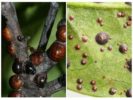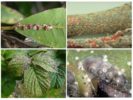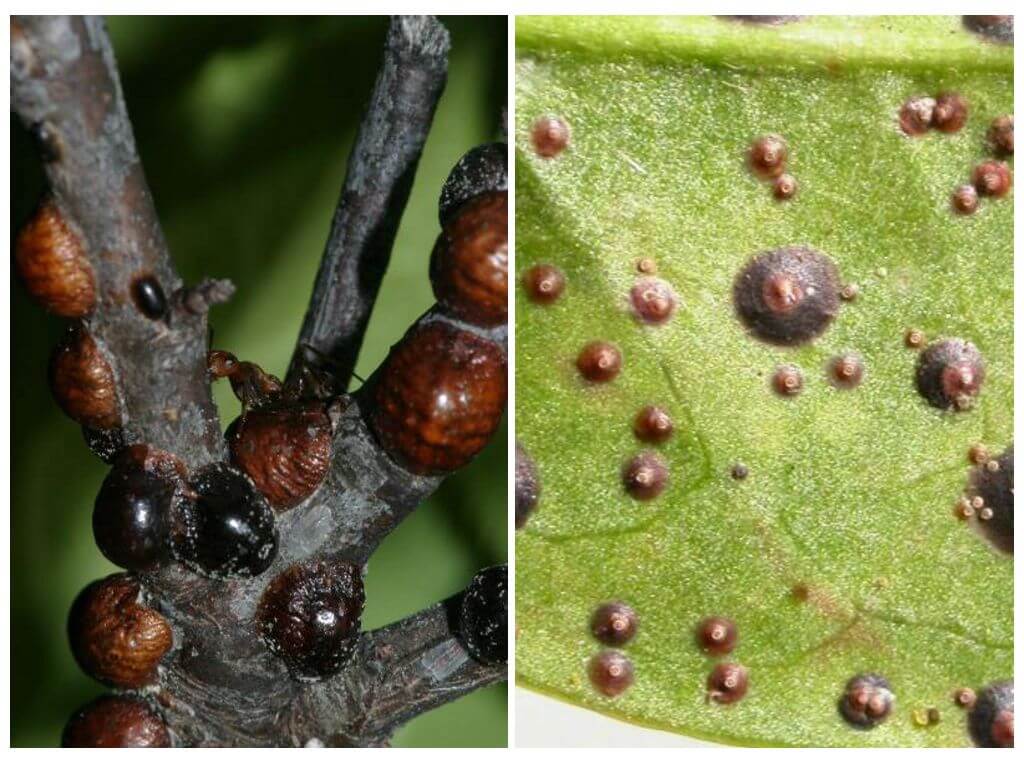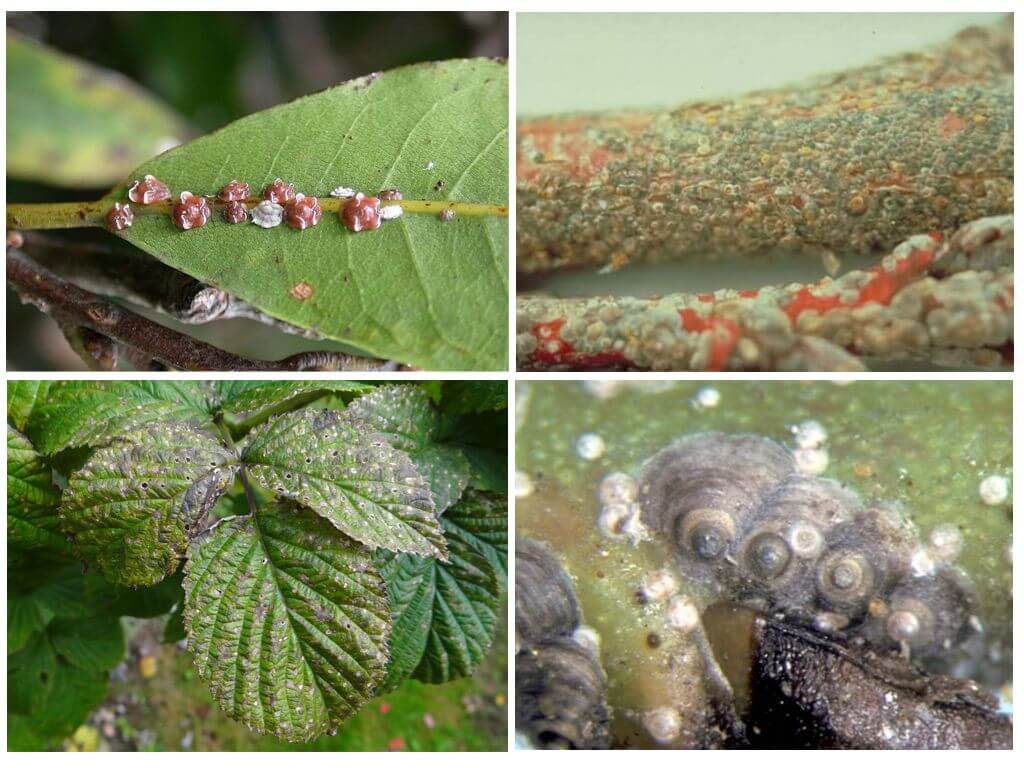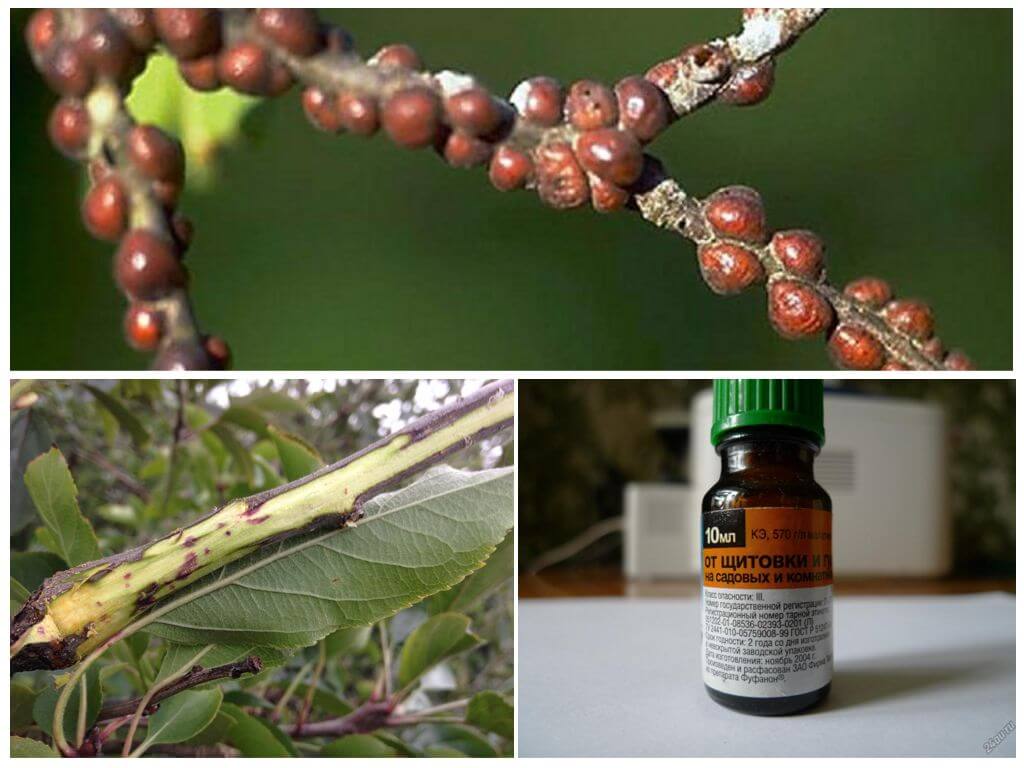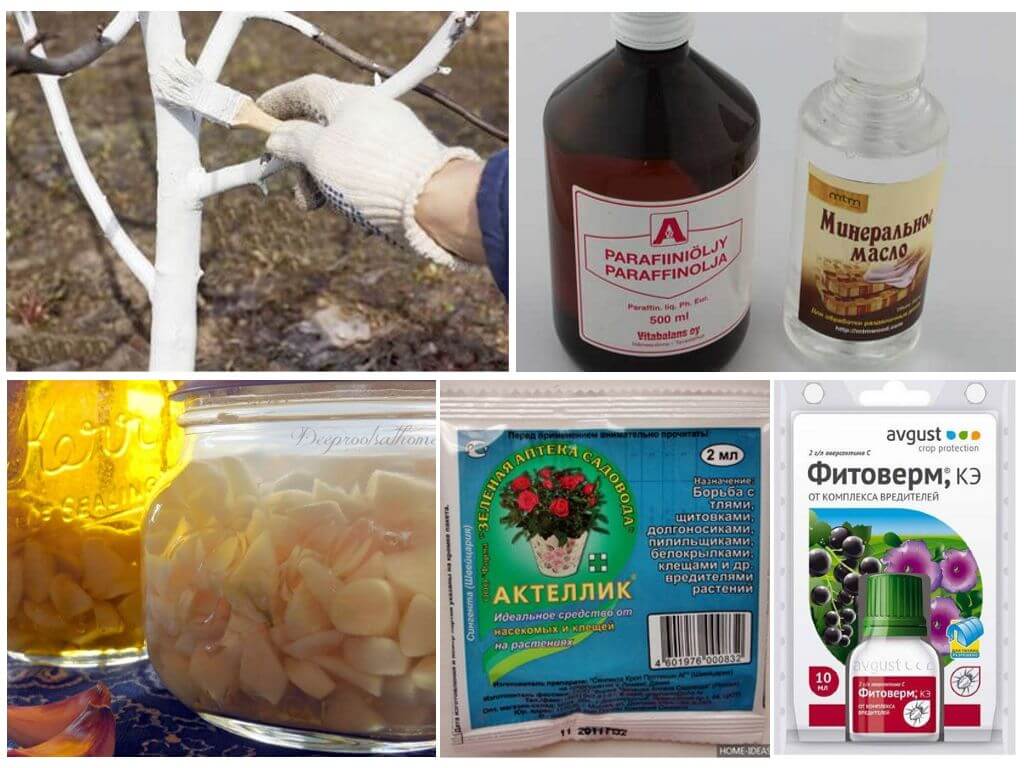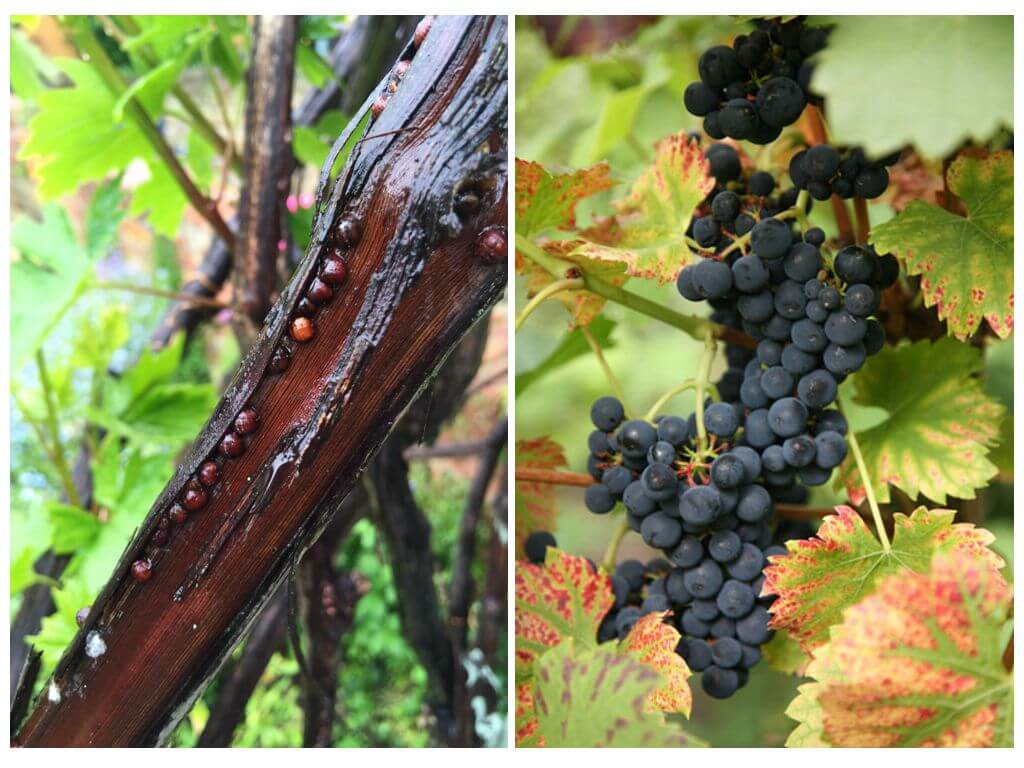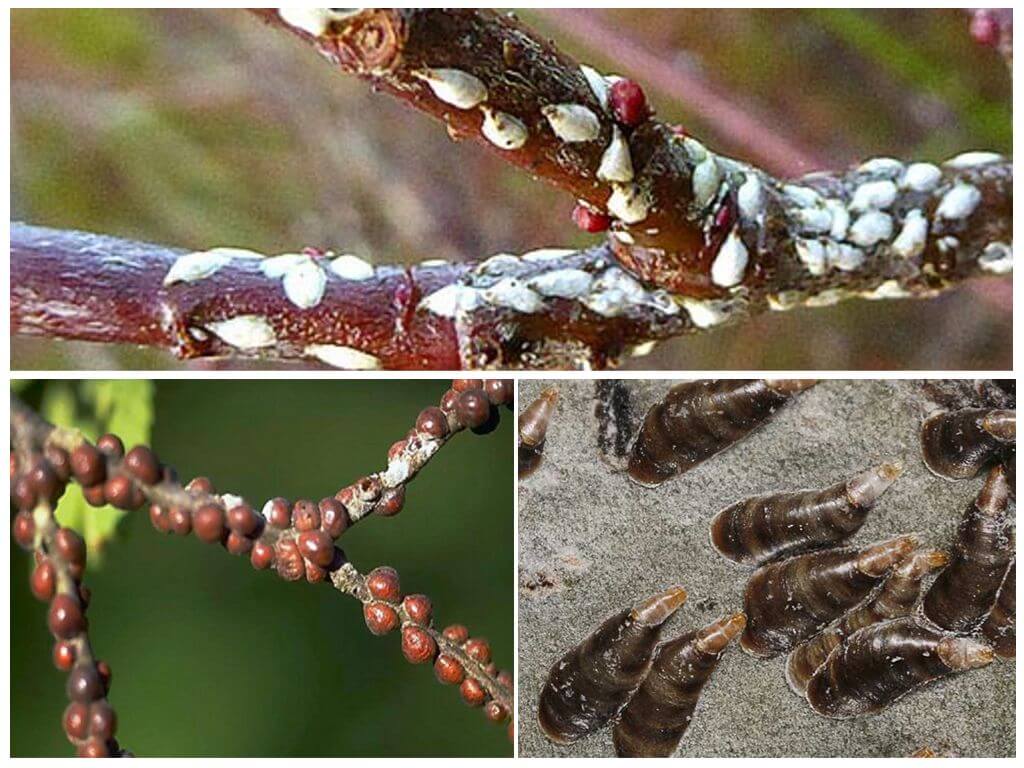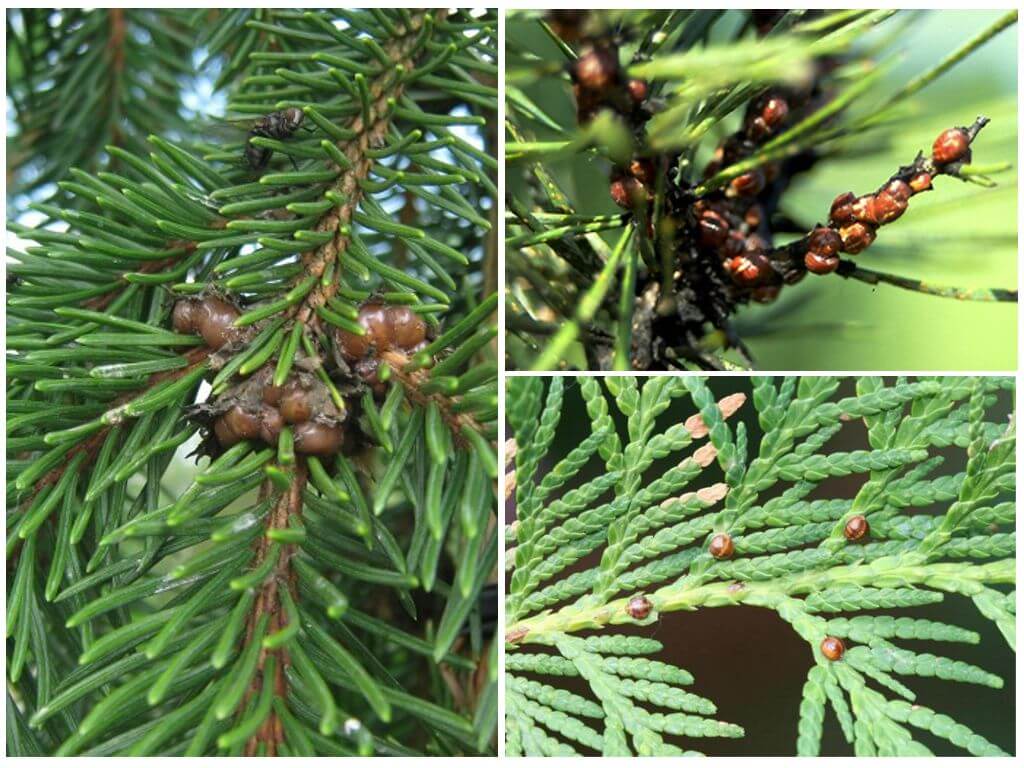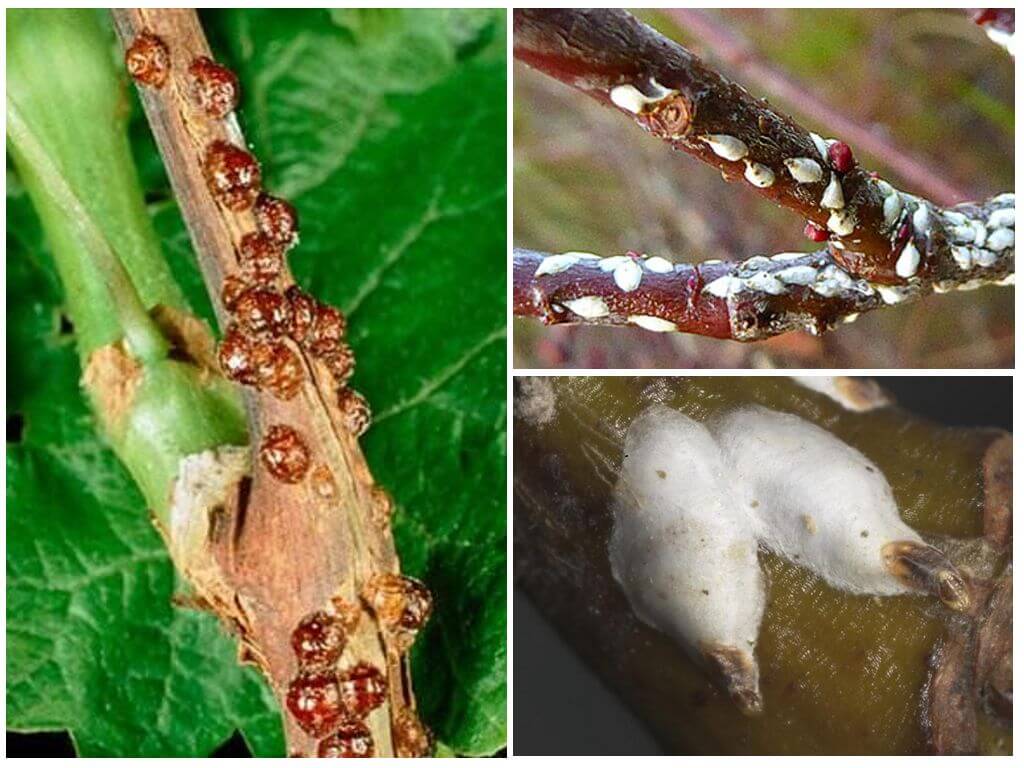- California scale insect
- Signs of infection
- Pest control methods
- Scalp control
Californian scale insects parasitize on fruit crops. A small insect infects cherries, apricots, pears, plums, and apple trees. Often have to fight with currants on the currant and grapes. Thousands of colony of scale insects harm leaves, trunks, branches, fruits.
Appearance
Californian scale scale reaches 2.5 mm. The appearance of males is significantly different from females:
- Females are deprived of paws, wings, the body covers a dense, durable carapace - a shield. The female leads a motionless lifestyle. Its main purpose is to lay eggs, give life to a new generation. The color of the females is approaching a dirty gray hue. The convex shape of the body resembles a wart, scales, plaque.
- Males reach a size of 2 mm. They have paws, wings, move well from one plant to another. On the head you can see large eyes of purple color. The size of the flap reaches 1 mm. During the mating season, the male discards the shield. A few days later he dies.
- Larvae of the Californian scale insects have several stages of development. They are born small - up to 0.3 mm, moving bugs. They are also called vagrants. In search of a convenient place for themselves, they spread throughout the plant, significantly increasing the degree of infection.
Within 22 days, several stages of development pass. The last generation nymph is a motionless larva with a rounded shape. At this stage, a shield is formed. Body color is dark brown or black.
A photo of a California scale shield of different sexes can be seen below.
Reproduction, life cycle
Californian scale insect is active in the warm season. Over the entire season he manages to reproduce 2 generations of larvae. One female lays about 100 eggs. They develop under the shelter of a strong shell. The female dies, and small, mobile bugs appear from the eggs. Larvae feed pulp and juice of plant leaves.
After 22 days, the nymphs become motionless, acquire their own shields. At the same stage, the ability to mate develops. Males throw off their flaps, females after fertilization become motionless, tightly attached to branches, tree trunks.
On a note!
The larvae that were born at the end of July-August remain wintering. Durable shield protects them from negative external influences. The larva easily tolerates temperatures below 30 degrees Celsius.
With the onset of spring, the movement of sap in trees is activated, larvae wake up. Finish their stage of development. Already at the end of March, the plants are infected with dangerous bugs.
Signs of infection
You can notice the presence of California scale insects in the appearance of the plant:
- Gray, light brown scales form on the leaves. The attempt to separate the "warts" ends in failure. Such tenacity indicates the presence of adult individuals on the tree.
- With a thorough examination of the culture, small mobile bugs - larvae - are visible from the back of the leaves. This suggests that the females successfully gave birth to a new generation. In early August, there will be a peak of infection.
- With severe infection with numerous scales, branches, trunk are covered.Dark, red spots form on damaged areas of wood.
- The bark loses its natural luster, and the plant itself loses its vitality, since all the energy is spent on restoring the bark.
- The presence on the culture of developing larvae leads to deformation, gluing, falling leaves. On branches, trunks, streaks of juice are formed.
- Inflorescences poorly develop, fall off. Yields are reduced.
In the absence of proper attention on the part of man, the culture gradually dries up. A strong infection of the site with a California scale insect threatens the disappearance of a whole garden in a couple of years.
Methods of struggle
Getting rid of Californian scale insects is quite difficult. The reason for this is a strong carapace that reliably protects an adult insect, larvae at the last stage from the negative effects of environmental factors, insecticides. Pests can be destroyed either in the early spring, or during the period of the appearance of tramps.
On a note!
Absolutely useless means based on substances of contact action. The insecticide does not penetrate the scutellum, and adult females, nymphs of the last generation do not move along the surface of the plant.
It is recommended to use systemic or intestinal effects. The active components enter the plant sap, and then penetrate the body of pests through nutrition.
However, insecticides are allowed to be used only in the early spring, before the leaves bloom, or in the late autumn, after harvesting. During the flowering period, the ripening of the crop, it is recommended to use folk remedies.
On a note!
You can reduce the number of California scale insects in a mechanical way. Cut the bark, remove the leaves, break off the branches. Then everyone is thrown into the fire.
Methods of combating California scale insects are chosen based on the degree of infection, the growing season, their own preferences.
Means of struggle
To destroy pests, folk remedies, professional drugs are used.
- Lubricate the trunks, tree branches with mineral oil. For a plant, the substance is harmless, safe for humans, scabs are blocked by oxygen.
- When seedlings are damaged in the garden, the scabs are brushed, the leaves are sprayed with soapy water. Laundry soap, tar, green is added to the water.
- Wood ash is bred in water, soap is added, the plant is sprayed, the soil is watered under it.
- To fight a scab in the gardenprepare tincture of garlic. Pour crushed garlic with cold water, insist a day. Filter, add green soap, carry out spraying.
- The best drug for California scale insects is Actellic. You can also use Aktara. The action lasts for a month. If necessary, repeat spraying. But no later than 20 days before the harvest.
- Fitovern is a representative of biologically active drugs. Acts not so fast. Spraying is required every week for a month. But safe for bees, humans. Wash the fruits well enough under running water.
With severe contamination of the area, quarantine should be ensured. Do not export fruits, seedlings from the plot. Actively control pests throughout the year. Then next season will be able to get a good harvest.
